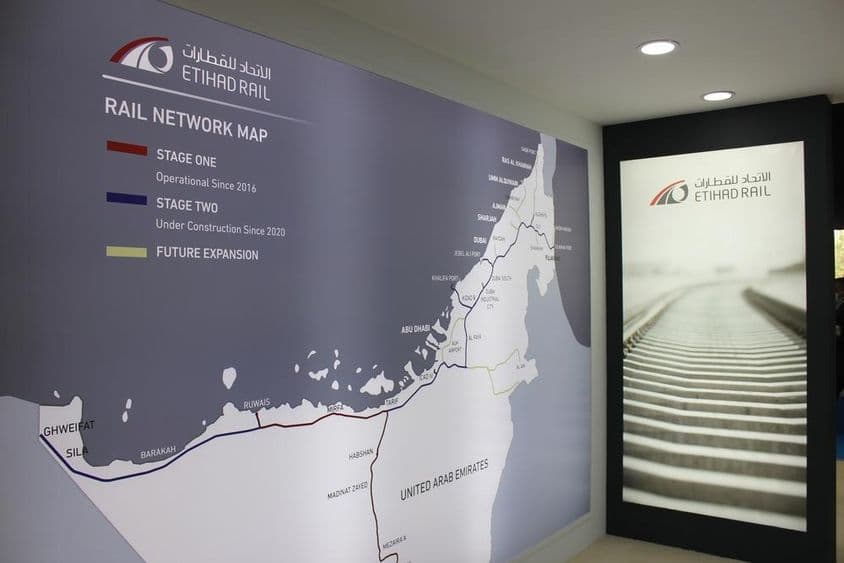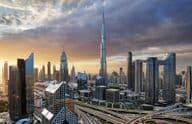Etihad Rail: Transforming UAE's Real Estate Landscape

Real Estate Revolution in the UAE: Etihad Rail's Impact
The United Arab Emirates is witnessing an infrastructural transformation that could radically change where and how people live in the country. The Etihad Rail passenger network, set to commence operations in 2026, may open a new chapter in the UAE real estate market—particularly in regions previously considered "too far."
A Railway Bringing Opportunities Closer
Etihad Rail aims to transport approximately 36.5 million passengers annually by 2030. The line, approximately 900 kilometers long, connects 11 cities and areas across all seven emirates, including Dubai, Abu Dhabi, Ras Al Khaimah, Fujairah, Al Ain, as well as smaller centers like Al Dhaid or Ruwais. This network not only facilitates more convenient travel but also has an economic stimulating effect—especially in terms of real estate development.
Turning "Too Far" into Accessible
One of the biggest impacts of the development is that it breathes new life into current Tier-2 and Tier-3 cities, which were less competitive than Dubai or Abu Dhabi in terms of infrastructure and services. With easy, fast, and cost-effective transportation, these places are becoming more attractive not only for investors but also for renters and buyers.
With simplified transportation, many might choose to leave downtown areas and move into larger, better value-for-money homes on the city edges or in other emirates. This is especially true for areas like Al Dhaid, Fujairah, or Ras Al Khaimah, where property prices were lower thus far but could rise with increasing demand.
New Meaning for Second Home Concept
The project also transforms the "second home" market concept. Whereas it was previously just a theoretical possibility for a Dubai family to head to Fujairah for a weekend, the new railway system makes this practically feasible. Distance is no longer a barrier, thus increasing the value of such coastal or mountainous properties. Around stations like Jumeirah Golf Estates, new high-performance real estate corridors might develop.
Accessibility Over Location
Traditional real estate valuation models were based on geographic proximity: the closer something was to downtown or work hubs, the more valuable it was. However, Etihad Rail fundamentally changes this thinking. "Accessibility" becomes the new standard. If a place can be reached within 50 minutes to Dubai or Abu Dhabi, it is no longer "countryside" but a realistic alternative.
This is not speculation—this is organic demand. Transit-oriented developments appearing along the railway create new urban clusters: pedestrian-friendly communities, mixed-use buildings, educational institutions, office buildings, and recreational spaces.
Historical Examples and Future Possibilities
The effects of similar investments have been observed before: after the launch of the Tokyo–Osaka Shinkansen line in Japan, the value of commercial land increased by 40% and demand for residential properties increased by 60% within five years. The centrally located Nagoya city evolved from a secondary market status to one of the most competitive logistic and office areas in Japan.
The UAE's advantage is that there aren’t outdated railway systems or inherited problems—everything is built with the latest technology, green thinking, and digital integration. This allows the railway to be not just a mode of transportation but an economic and social catalyst.
Real Estate Market Restructuring Impacts
The following trends are likely in the coming years:
Property price increases in cities along the railway line (e.g., Fujairah, Ruwais, Al Dhaid).
Rising rental rates in currently lower-demand areas.
Emergence of mixed-use communities around stations.
Repositioning of secondary cities: they can be viewed not just as residential areas, but also as workplace, business, and leisure centers.
Mobile lifestyle: those working remotely can establish new bases (e.g., Al Ain or Kalba), staying close enough to the capital or the coast.
Summary
Etihad Rail goes far beyond transportation. It brings a new kind of spatial organization to the UAE, where travel time and convenience become more decisive than physical distance. This redefines the real estate market, labor market, tourism, and quality of life. Recognizing this change in time can provide significant advantages either as an investor or a resident.
Dubai remains the center, but the "periphery" of its energy field will now significantly extend. The arrival of Etihad Rail means not only faster travel—but a reimagined geography for an entire country.
(The article is based on statements from real estate experts and residents.)
If you find any errors on this page, please let us know via email.


